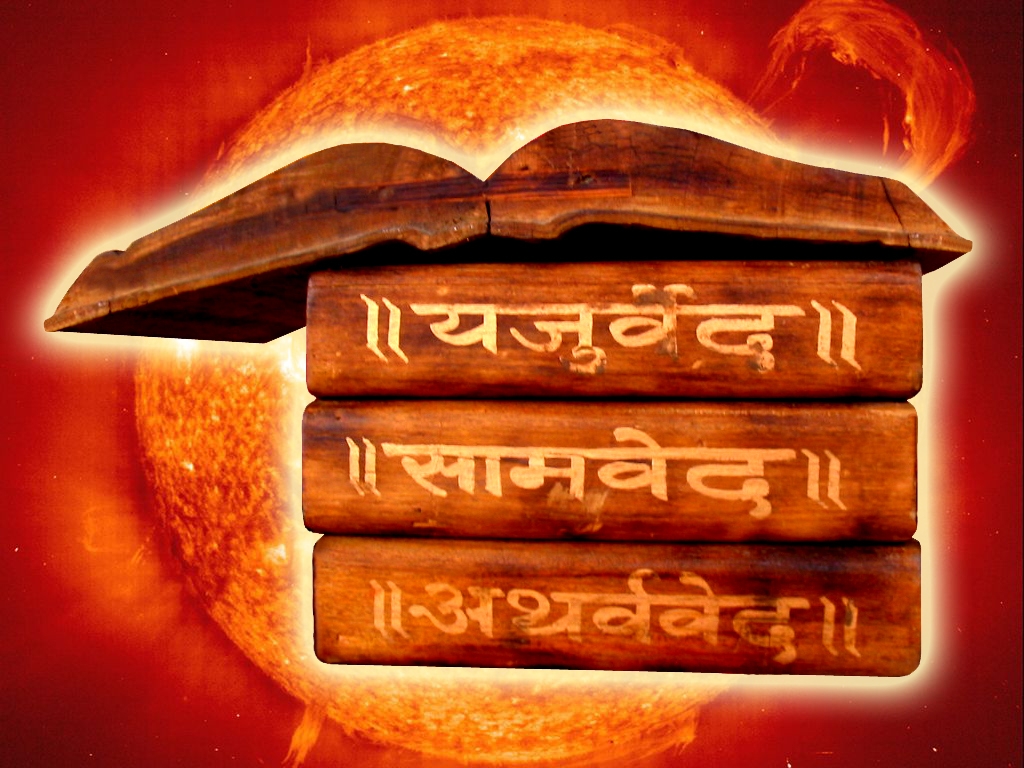4 Vedas In Gujarati Pdf Download
Dear All, Almost all the major ancient scriptures of India have been distorted by meaning and essence by translating them in English and promoting the translated versions, while hiding from public the original ones written in Indian languages. This was the strategy of the foreign invaders, particularly the British, who failed to bring Indian minds under their dominance because of the strong character and charisma that our culture gifted us. So they needed to create a kind of hate and suspicion in our minds against our people, traditions, culture and religion so that they could easily divide us, propagate their religion and rule us unchallenged – mastering our minds the way wished. WHAT MEASURES HAVE BEEN TAKEN TO AVOID THE RISKS OF PROMOTING/PROPAGATING THE WORKS OF SUCH ANTI-HINDU ANTI-INDIA AUTHORS WRITTEN IN ENGLISH rather than providing links to download the original ones that were written in Indian languages??? For example, ManuSmriti.
Is not there any source to download the original writing in stead of the one translated by G. Please clarify.
4 Veda Samhitas; Vedas and Vegetarianism; We are presenting downloadable pdf versions of Veda Samhitas in Devanagari. There may be minor errors for which we apologize. Read and Listen Ved Puran Online. Puran (19.6 GB / 656.6 Hrs), Audio (MP3), PDF, Torrent. 1, Agnee Puran (1.16. 4, Brahma Puran (0.98 GB/17.7 Hrs.).
The Age of the 4 Vedas Each of the Vedas were composed at different dates, and in fact different verses within the same Veda are themselves composed in different centuries. With the Rig Veda, we can say that the last of hymns were composed at the latest by 1500BC, which sits as the terminus ante quem. However, the earliest of Rig Vedic hymns were composed much before this date. Probable timelines for this range from 3000BC to 6000BC.
The German scholar Max Mueller, who was biased by the timeline set by the Bible, chose the date of 3000BC. Certainly there are many astronomical observation within the Rig Veda that point to a time t least 7-8 millennia before the present.
Whether these refer to events that were current for the composers, or whether they were applying complex astronomical calculations. The last of the Vedas was in its final form at the very latest by 900BC, because by this date the Upanishads began to be gleaned and set apart from the Vedas. Again, it must be noted that the Vedas were essentially oral traditions, passed on from generation to generation by recitation and memorization. It is remarkable that human beings were able to memorize such huge volumes of text, maintaining the sanctity and perfection of inflexion and pronunciation involved in correct Sanskrit pronunciation.
Whether they used any mnemonic devices or were trained from an early age is not known. But there are many methods available even today in the yogic processes that help enhance one’s memory and attention capabilities. By the Mauryan Period around 300BC, the essential Vedanta involving the Vedas and Upanishads were put down in writing. Legends say that the first impetus to transfer the Vedas from oral to written came at the end of long 12-year drought, which cause a huge loss of life and thus also of knowledge. It is said that the rishis and sages of the land decided that if the Vedas were to be preserved, they should be placed in writing.
It is known who intiated the porcess for the first three Vedas. All we know is that various sages from Vasishtha, to Agastya, from Marichi to Atri, and from Angiras to Vishwamitra, have hymns attributed to them in the Rig Veda.
Coupling matrix synthesis software crack. Of the Atharva Veda, it is said that Veda Vyasa (of Mahabharat fame) and Maha Atharvan, collected and put this wisdon into writing. The Structure of the Vedic Books The Vedas are four in number – the Rig Veda is the earliest, then the Sama Veda which is next, the Yajur Veda which is third in age, and the Atharva Veda. They are called “Shruti” thee final authority of the Aryas. They were the revelations to the Rishis in Samadhi of Brahman or Atman [which is universal].
Thus, their principles are impersonal, ever-present, and ever-lasting, and they can be realized by any person who can go into the samadhi state. The Absolute Truth of these revelations were further supported and testified by the Vedanta Sutras of the sage Vyasa and the Bhagavad Gita of Shri Krishna. So these three sets constitute the standard works of the Vedanta. Each Veda has three divisions: 1. Collections of hymns (Suktas) used at sacrifices and offerings. Brahmanas: precepts for sacrifice, praise, stories and traditions; They treat of the relation between the Suktas and ceremonies.
They explain the sacrifices with the help of legends and stories 3. Upanishads: Philosophical treatises embodying Brahma Vidya. The six Darshanas or Great Systems of philosophy arc based on them. There are more than 200 Upanishads of which 12 are called Major and the rest Minor. The following are the Major Upanishads: Aitereya Kaushitaki, Taittiriya, Katha, Shvetasvatara, Brihadaranyaka, Isha, Kena, Chandogya, Mandukya, Mundaka and Prashna. Of these Mandukya, Katha, Mundaka, Kena and Prashna, and Maitri of the minor are highly philosophical.
